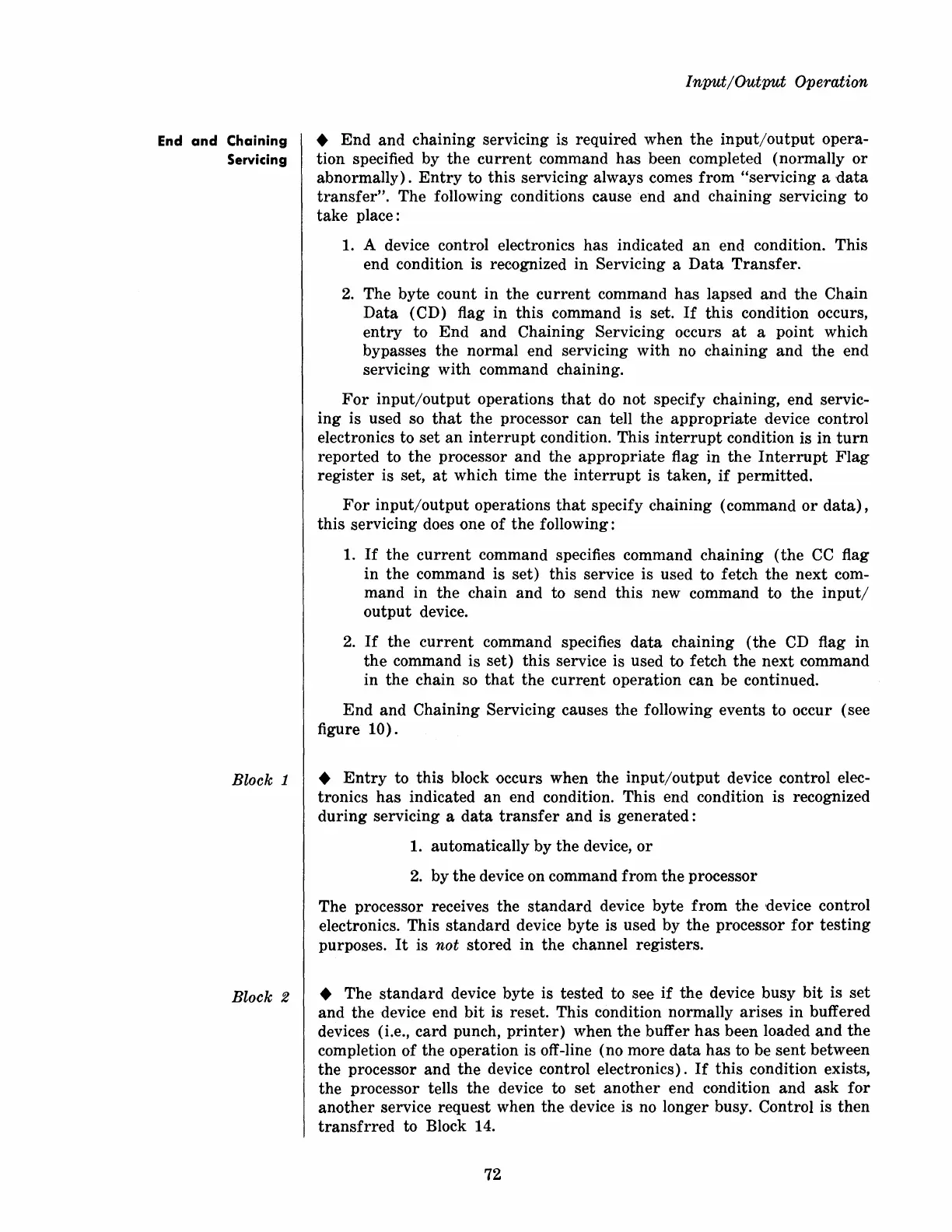End
and Chaining
Servicing
Block
1
Block
2
Input/Output Operation
•
End
and
chaining servicing is required when
the
input/output
opera-
tion specified by
the
current
command
has
been completed (normally
or
abnormally).
Entry
to
this
servicing always comes
from
"servicing a
data
transfer".
The following conditions cause end
and
chaining servicing to
take
place:
1. A device control electronics
has
indicated
an
end condition.
This
end condition is recognized in Servicing a
Data
Transfer.
2.
The byte count in
the
current
command
has
lapsed
and
the
Chain
Data
(CD) flag
in
this
command is set.
If
this
condition occurs,
entry
to
End
and
Chaining Servicing occurs
at
a point which
bypasses
the
normal end servicing
with
no chaining
and
the
end
servicing
with
command chaining.
For
input/output
operations
that
do
not
specify chaining, end servic-
ing
is used so
that
the processor can tell the
appropriate
device control
electronics to
set
an
interrupt
condition. This
interrupt
condition is in
turn
reported to
the
processor
and
the
appropriate
flag in
the
Interrupt
Flag
register
is set,
at
which time the
interrupt
is taken,
if
permitted.
For
input/output
operations
that
specify chaining (command
or
data),
this
servicing does one
of
the
following:
1.
If
the
current
command specifies command chaining
(the
CC
flag
in
the
command is set) this service is used
to
fetch
the
next
com-
mand in
the
chain
and
to send
this
new command to
the
input/
output
device.
2.
If
the
current
command specifies
data
chaining
(the
CD
flag in
the
command is set)
this
service is used to fetch
the
next
command
in
the
chain so
that
the
current
operation can be continued.
End
and
Chaining Servicing causes
the
following events to occur (see
figure
10) .
•
Entry
to
this
block occurs when the
input/output
device control elec-
tronics
has
indicated
an
end condition. This end condition is recognized
during
servicing a
data
transfer
and
is
generated:
1. automatically
by
the
device,
or
2.
by
the
device on command
from
the
processor
The processor receives the
standard
device byte
from
the
device control
electronics. This
standard
device byte is used by
the
processor
for
testing
purposes.
It
is not stored in
the
channel registers.
• The
standard
device byte is tested to see
if
the
device busy
bit
is
set
and
the
device end
bit
is reset. This condition normally
arises
in buffered
devices (Le.,
card
punch,
printer)
when
the
buffer
has
been loaded
and
the
completion
of
the operation is off-line (no more
data
has
to be
sent
between
the
processor
and
the
device control electronics).
If
this
condition exists,
the
processor tells
the
device to
set
another
end condition
and
ask
for
another
service request when
the
device is no longer busy. Control is
then
transfrred
to Block 14.
72

